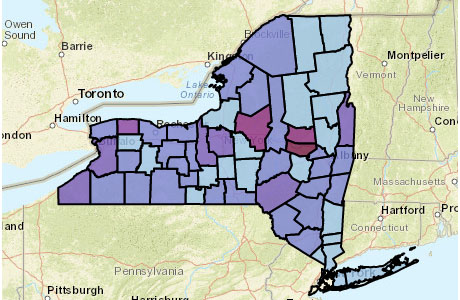Public Health Column: Learn how to protect your family against lead poisoning
Public Health Column from the Genesee County Health Department:
Is your child or grandchild at risk for lead poisoning? If you live in a home with peeling paint that was built before 1978, this may be something to consider.
Most commonly, kids get lead poisoning from lead-based paint, which was used in many U.S. homes until the late 1970s, when the government banned the manufacture of paint containing lead. That is why kids who live in older homes are at a greater risk for lead poisoning.
Lead poisoning is caused by swallowing or breathing in lead dust. Lead is a metal that can harm children and adults when it gets into their bodies. In addition to lead based paint in the home, there are many sources of lead including, but not limited to: paint on old toys, furniture, and crafts, dust, soil, drinking water, air, folk medicines, cosmetics, children’s jewelry and toys, workplace and hobbies, lead-glazed ceramics, china, leaded crystal, pewter, imported candies and/or food in cans, firearms with lead bullets, foreign made mini-blinds, car batteries, and radiators.
Lead can harm a young child's growth, ability to learn and may be linked with tooth decay / cavities, hearing loss, and behavior problems. Lead can also be passed from mother to baby during pregnancy.
There are generally no symptoms or signs to help you know if your child has lead poisoning. A person with lead poisoning usually does not look or act sick. The best way to find out if your child has lead poisoning is by testing. The most common test is a quick blood test. It measures how much lead is in your bloodstream.
Because children continue to be at risk, New York State requires health care providers to test all children for lead with a blood lead test at age 1 year and again at age 2 years. At every well-child visit up to age 6, health care providers must ask parents about any contact their child might have had with lead.
If there's been a chance of contact, providers are required to test for lead again. Parents can ask their child's doctor or nurse if their child should get a lead test, and what the lead test results mean.
Brenden Bedard, director of Community Health Services of Genesee and Orleans counties, commented on why it is important for pregnant women to be tested for lead, too.
“Mothers who live in an older home and are exposed to lead dust can inhale the particles, and pass it on to their baby," Bedard said. "Some of the effects that lead can have on their unborn child include: delayed growth and development, premature delivery, low birth weight, and in some cases may result in a miscarriage.”
If you are pregnant, talk to your provider about getting tested for lead.
Although lead poisoning is preventable, lead continues to be a major cause of poisoning among children. Thousands of children are still at risk. Here are some simple things parents and caregivers can do to reduce a child’s exposure to lead:
- Find the lead in your home. Most children get lead poisoning from lead paint in homes built before 1978. It is important to find and fix lead in your home as soon as possible. Have your home inspected by a licensed lead inspector;
- Before purchasing an older home, ask for a lead inspection;
- Get your child tested. Even if young children seem healthy, ask your doctor to test them for lead;
- Learn about drinking water. Water pipes in some older homes may contain lead solder where lead may leach out into the water. Let cold water run for one minute before drinking it, especially if it has not been used for a few hours;
- Give your child healthy foods. Feed your child healthy foods with calcium, iron, and vitamin C. These foods may help keep lead out of the body. Calcium is in milk, yogurt, cheese, and green leafy vegetables like spinach. Iron is in lean red meats, beans, peanut butter, and cereals. Vitamin C is in oranges, green and red peppers, and juice.
- Clean up lead dust. When old paint cracks and peels, it makes lead dust. Lead dust is so small you cannot see it. Children get lead poisoning from swallowing dust on their hands and toys. Use a damp cloth and a damp mop to reduce the spread of dust;
- Understand the facts! Your local health department can provide you with helpful information about preventing childhood lead poisoning.
For information about Health Department services contact:
-
Genesee County Health Department at: 344-2580, ext. 5555, or visit their website here.

